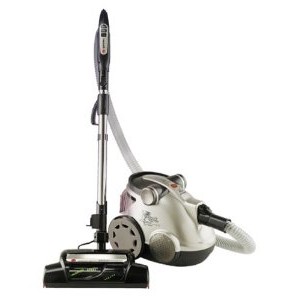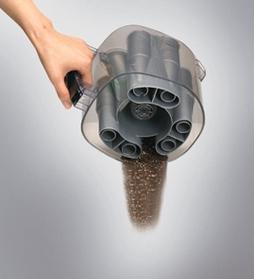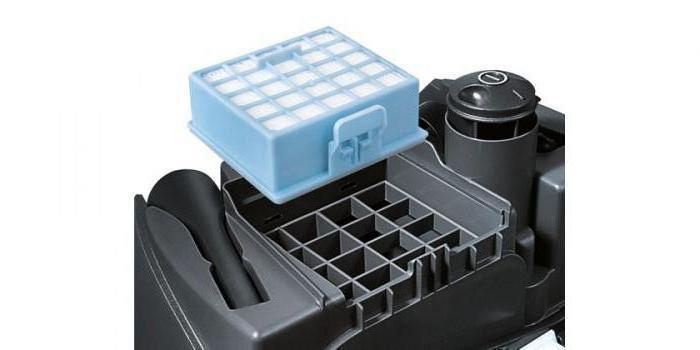HEPA-filter "Folter", filters for vacuum cleaners, cell and cartridge: the principle of action, design features
One of the main elements of ventilation systems inliving quarters, production plants and many types of equipment are filters whose variety of structures is explained by different cleaning methods and types of pollutants. HEPA-filter "Folter" - an example of a widely used cleaning equipment produced by domestic enterprise, engaged in the creation of air filters and dust collectors for over 60 years.
Filters from Folter
The research and production company "Folter" was registered on the basis of the laboratory of the Institute TSNIIPromzdaniy in 1995.

HEPA filter "Folter" is the final stage of air filtration in clean rooms of production departments, medical institutions, in pharmacy, electronics, food industry.
Types of HEPA filters: FAS, more powerful FsS-MP. Can be installed in air distribution models MV for final cleaning of air in rooms or in sections of the FSS, for cleaning large volumes of air.
Cell filters from "Folter" FyaS
Filters of type ФяС have a cell fold structure.
Purpose: Finishing air cleaning with sterilizing effect. They are installed in medical institutions or in shops producing medicines, laboratories or other premises that require a high level of air purification.
HEPA filter "Folter" FAS consists of:
- Housing.
- Filter material that is folded into the body.
- Separators from foil (aluminum) are laid between the filtering material to prevent it from sticking together.
- Instead of foil, special threads can be used that are glued to the material.
The material for the case is:
- Aluminum profile. The depth of the filter is 78, 150, 300 mm.
- Sheet of stainless steel or MDF.
After the filter material is installed in the housing together with the threads or mesh, it is poured into the sealants along the edges. The body forms a clamping surface with a thickness of:
- Aluminum - 15 mm;
- MDF - 12 mm;
- stainless steel - 18 mm.
The rubber is adhered to the top and the decorative grating is installed.
Classes of the filter PiC: E10, E11, E12, E13, E14, the efficiency increases with the height of the class from 85 to 99.995%.

HEPA filter "Folter" FyaS-MP - cellfolded, having as a part of special mini-plated packs of FyS-MP, are designed for processing large volumes of polluted air with a high filtration rate. Unlike the FiaC, it is suitable for installation directly into the air duct of the existing ventilation system.
Air filtration devices in vacuum cleaners
Filters for vacuum cleaners - household filteringelements that are the last barrier before the air from the cleaner body back to the living room. Practical all modern models practice the use of one of two types of filtering systems:
- HEPA-filter - stands for "high-efficiency dust-retainer" In addition to the basic HEPA-filter, vacuum cleaners usually also have conventional foam-based filtering elements.
- Water filter.

HEPA filters for vacuum cleaners can be of two types:
- Disposable paper in combination with fiberglass.
- Reusable, consisting of PTFE.
Most often in vacuum cleaners use disposable models of small sizes. They quickly get clogged with debris and reduce the performance of the vacuum cleaner, increasing the engine overheating.
The filter is designed for a delay of 0.1 to 1.0 μm. For NERO-filters, getting particles above the norm is highly undesirable, since they accelerate its clogging and reduce efficiency.
Types of water filters:
- Turbulent. The most common simple form. With air, dust and debris get into the water tank, where it remains. Disadvantage - incomplete absorption of dust and the installation of additional filter elements.
- Separator type. Dust with air enters the water in which the separator mechanism is placed, and the dust is safely drawn into the water and does not scatter. More expensive model.
Cartridge filters: types and features
Can be produced for both water and air purification.
Water filters - flow or bulb - are used both in the home for cleaning water for drinking or swimming pools, and in production conditions.
The criterion of choice is the volume of water transmission per hour and the degree of purification.

The degree of purification depends on the porosity of replaceable cartridges from 0.5 to 100 μm. Cleaning is not provided, only replacement.
Cartridge pleated dust filter is designed to separate dust particles from gas. Gas enters through the cartridge and exits through the inner hole already cleaned.
Conclusion
The role of filter elements in modern lifea person is difficult to overestimate. When operating it is necessary to remember the standard rule: a dirty and clogged filter can become an even greater source of contamination than the medium passing through it. The cleaning and replacement in time is a guarantee of obtaining a quality result guaranteed by the manufacturer.








